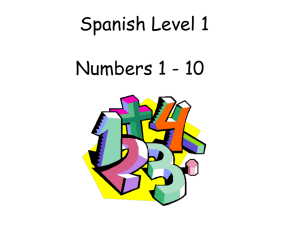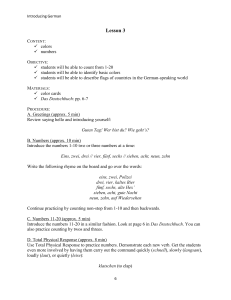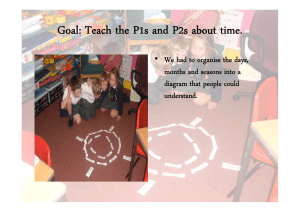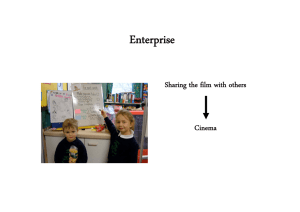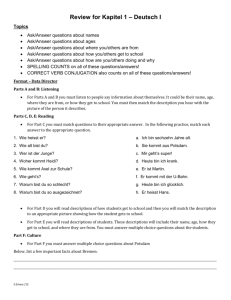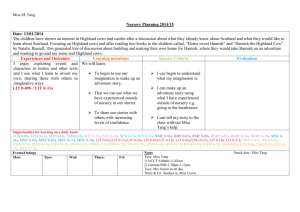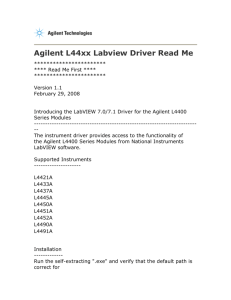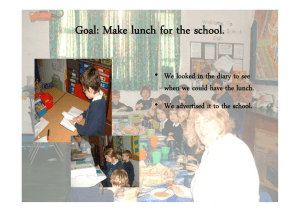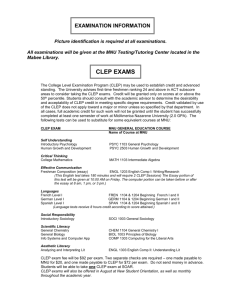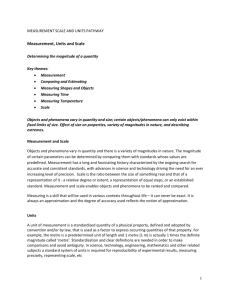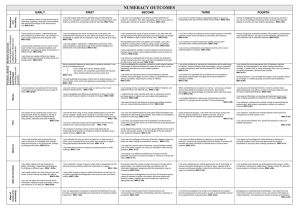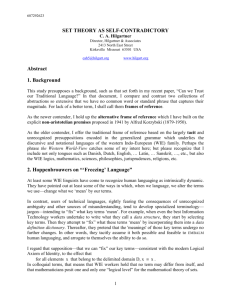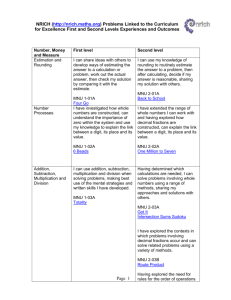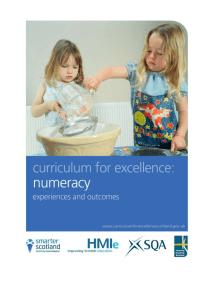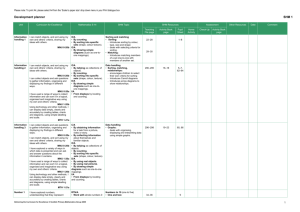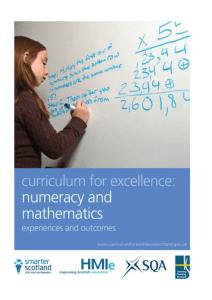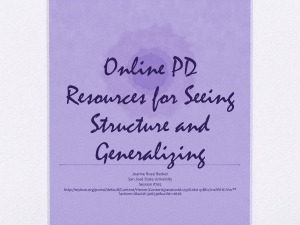German Early Level Numbers
advertisement
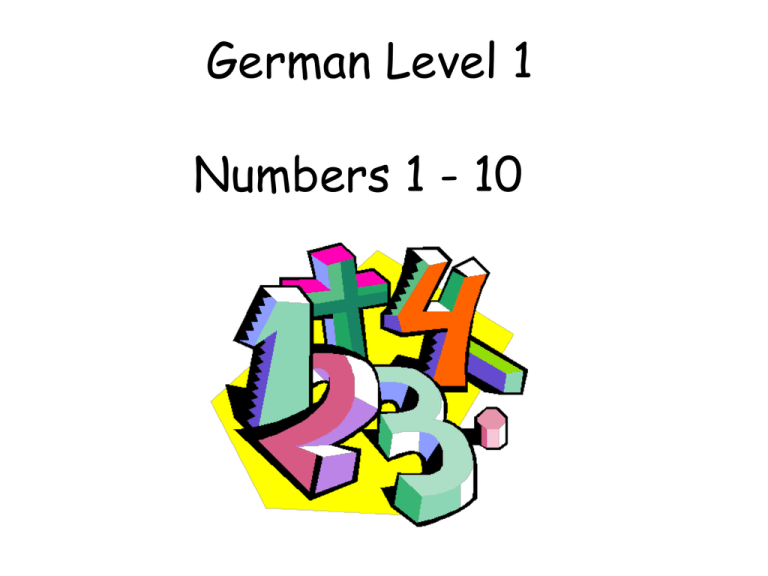
German Level 1 Numbers 1 - 10 Early Level Significant Aspects of Learning • Use language in a range of contexts and across learning • Develop confidence and enthusiasm to communicate using the language being learnt • Begin to develop an awareness of other countries, cultures and languages • Listen and join in with simple songs, stories and rhymes • Explore and recognise patterns and sounds of language through listening, watching and playing • Understand, respond to and say simple greetings and personal information (e.g. name) • Repeat and understand simple familiar language from a familiar source • Actively take part in simple daily routine language • Participate in familiar games including outdoor learning • Begin to explore resources to support my learning e.g. picture dictionaries Vocabulary 4. Numbers 1 – 10 Wie viele? eins zwei drei vier fϋnf sechs sieben acht neun zehn How many? one two three four five six seven eight nine ten Wie viele? eins zwei drei vier fϋnf sechs sieben acht neun zehn Embedding the language You can use numbers to count things throughout your lessons. Combien challenge! Every time the teacher calls, “combien?” the pupils have to count whatever they have in front of them and then say it in French. Using numbers and counting as a way of settling a class, putting a time limit on tidying etc. I have explored numbers, understanding that they represent quantities, and I can use them to count, create sequences and describe order. MNU 0-02a Sample activities You will find a bank of sample activities which you can use to practice the vocabulary in the classroom. This is not a prescriptive list of activities and you can use or adapt them to suit the needs of your class. You will find a set of more supported activities in Early Feelings and more challenging activities in Level 2 Feelings. (Finger) puppets for counting Using a German puppet and asking pupils to teach him how to count in English and then the puppet can teach them how to count in German, helps pupils to differentiate between the two and can help enhance their developing numeracy skills in English. I have explored numbers, understanding that they represent quantities, and I can use them to count, create sequences and describe order. MNU 0-02a Compter, Compter! 1. All pupils sit in a circle with 10 toys in the centre. 2. They then close their eyes and say the numbers from 1 – 10. 3. Whilst they are counting, another pupil (or the teacher) removes a number of toys from the middle. 4. When they get to 10 they open their eyes and have to say how many toys are in the centre (by asking “Wie viele?”) 5. You could let whoever guessed it right take them away/hide them afterwards. I have explored numbers, understanding that they represent quantities, and I can use them to count, create sequences and describe order. MNU 0-02a Songs! You will find a bank of sample songs which you can use to practise the vocabulary in the classroom. This is not a prescriptive list of songs and you can use or adapt them to suit the needs of your class. You will find a set of more challenging activities in Level 1 Numbers. German numbers song 1-10 German numbers 1-10! ICT Resources online You will find a bank of sample ICT activities which you can use to practise the vocabulary in the classroom. This is not a prescriptive list of activities and you can use or adapt them to suit the needs of your class. You will find a set of more supported activities in Early Feelings and more challenging activities in Level 2 Feelings. Each of the slides contains an image of the website page. If you click on the image it will take you to the page. Alternatively you can use a link address which you will find in the slide notes. Tschϋss!
